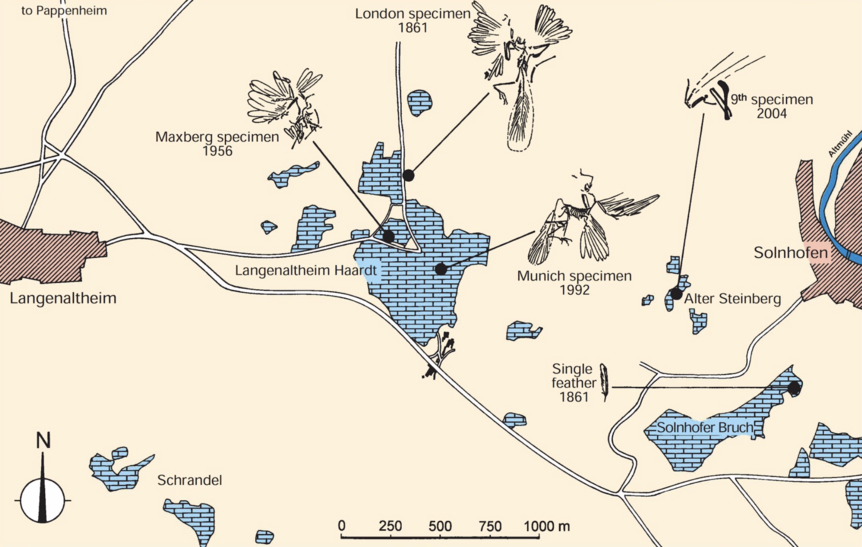Create a free profile to get unlimited access to exclusive videos, sweepstakes, and more!
After 159 years, an Archaeopteryx is thought to have shed the first fossil feather ever found

How much can just one feather reveal—especially if that feather is a fossil that drifted to the ground sometime during the Jurassic era?
Archaeopteryx is the earliest known bird that is thought to have looked mostly birdlike with some dinosaurian features. When a fossilized feather was first unearthed near Berlin 159 years ago, it sparked a debate over whether it was really molted by the extinct Archaeopteryx or some yet-unknown feathered dinosaur species. Now that a team of paleontologists from the University of South Florida have analyzed the feather, its attributes have shown that it is more likely to have come from an Archaeopteryx than any other creature.
So why has there been an ongoing argument about this particular feather for so long?
“It all comes down to the fact that it is an isolated feather, dissociated from a skeleton (presumably a molted feather),” Ryan Carney, who led a study recently published in Scientific Reports, told SYFY WIRE. “Also, until now no one had compiled all of the available evidence and addressed this question systematically, including critical overlooked evidence such as the fact that the isolated feather was found at the same fossil site as four skeletons of Archaeopteryx.”
What made this even more confusing is that there are no distinguishing features between this feather and a feather from an extant bird. There isn’t even a difference between this and the feather of a dinosaur. Besides the fact that it was found where four Archaeopteryx specimens were fossilized, Carney and his team could make out that what they were looking at was a primary covert feather. These feathers cover the flight feathers and contour the wing to make it more aerodynamic. Primary or upper wing covers are visible when a bird is upright. Primary coverts overlap and make up the top two layers near the upper part of the wing.
“Even hypothetically, if a new dinosaur with the same type of advanced feather were discovered from this ancient archipelago, these Archaeopteryx specimens would still be more abundant and closer to the isolated feather,” said Carney.
It was also revealed that the feather had fallen from the left wing. This became evident when the team took a closer look at the pattern of overlap between tiny structures known as barbicels and barbules. Feathers have barbs, which are like mini feathers with their own shafts. They are basically feathers within feathers. So long as a bird does the whole preening thing right, these barely visible hooks (barbicels) and smooth structures (barbules) are aligned and realigned to keep the feather smooth. The barbicels on one side of these barbs hook up with barbules on the other to make a feather aerodynamic.
The color of this feather was also determined to be a matte black, as opposed to the color-shifting iridescence you may see on some types of birds. This contradicts an earlier study that assumed the feather was black and white. Though the analysis revealed that the tip of the feather was probably a darker black than the rest, the team’s observation of its melanosomes suggested that the feather was still entirely black.
“First, we used a specialized type of scanning electron microscope[*] to image the melanosomes,” Carney said of the process. “Then we measured the size and shape of the melanosomes, and statistically compared them to a large database of modern bird melanosome measurements and colors [Figure 6]. This provided a result of matte black, with 90% probability.”
Though Carney stressed that we can never really know the exact origin and color of this feather, chances are higher that it came from an Archaeopteryx than anything else. This might make the way you see birds go back 150 million years.



























